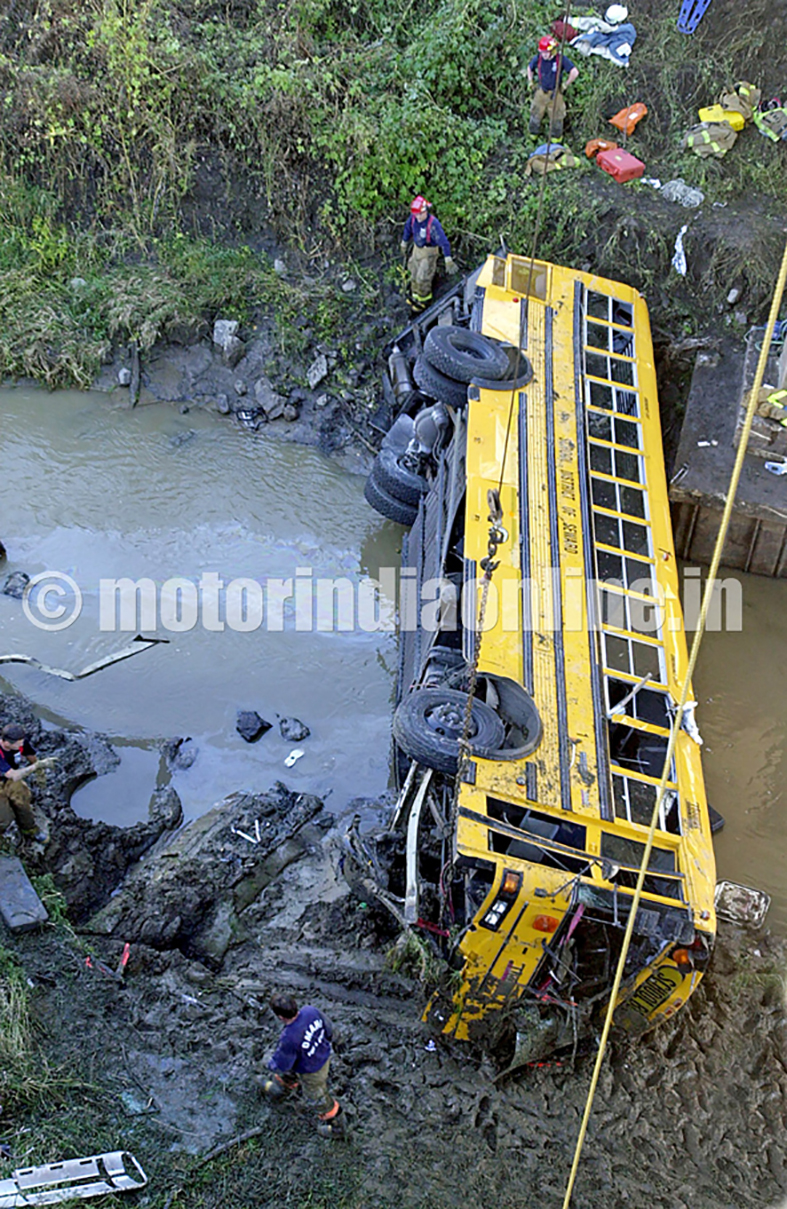By Dick Fischer, President, Trans-Consult (USA)
Over 1,50,000 people were killed across India in road accidents last year, at an average of 400 every day, according to data from the Ministry of Road Transport and Highways. We need to ask ourselves whether adequate training could have reduced the number of road accidents.
Training is an orderly, systematic way of teaching someone to do something with a clearly defined objective. It is a skill that can be learned and improved with practice. Our employees observe the way we act and conduct ourselves and are thereby trained by example. They pattern themselves after our dress, manners, personal motivation, attitude, appearance and work habits. In short, everything. Hence, don’t rush into the vehicle and begin to drive without doing a vehicle safety check first.
Training begins with the first minute a new applicant reports for work and continues throughout his/her training, retraining, promotions and job changes, regardless of time on the job. Training becomes a continuing project, one that is never quite finished and is a clear indication of a manager’s overall ability. The people who are trained judge a manager or driver trainer.
Managers are only as good as the people who work for them. If people down the line do not have the proper skills to do an adequate job, no matter how good the manager is, there is bound to be trouble. All of our problems can be directly related to, and corrected by training. Turnover student and client relations, cost per mile, run forecasting, and on and on until we hit the bottom line. Training is another way to let the employees know that we are interested in them and their development. Employee morale is high where professional training takes place in a regular and systematic manner.
If you or your people are to be promoted, they must be trained. Managers, driver trainers, dispatchers and shop foremen are not born, they are trained. When employees are not trained to do the job safely and the correct way, they will do it their way. A trained employee is capable of training others, another extension of a good manager.
Imagine opening up school with a crew of people, none of them having ever worked in pupil transportation or properly trained. You would have chaos. You would run out the door screaming or do something else, but one thing is certain – the school would open anyway.
How many times does the loss of one key employee disrupt the smoothest running part of the operation? Do you think we should train and retrain and cross-train? Managers say they don’t have time to train.
Each training method has its own place and purpose: individual instruction, for a particular skill; group instruction, to correct without offending someone; and written instruction, for changes in policy or procedures.
Any method of training will work if it is based on the following principles:
Preparation: The trainer should first prepare a training plan and make an analysis of the job to be taught, show all operations, steps and job knowledge. Three columns could be made as above, listing the major operations and the steps for each operation, with in the knowledge column containing all the tricks of the trade. This insures that all trainees will get the same uniform instruction.
Once the training plan is ready, the objective should be recognized – to train a person to become the safest driver on the road. Next, the trainer has to schedule the training to meet the objective and prepare a job analysis to meet the same. Following these, the trainer should ensure that all the required tools and materials are ready, so that there are no interruptions, and start off proceedings by establishing the JOP (jumping off point) of the trainee (where he/she is now) and start a little lower so that the trainee can relate to the presentation.
Once the trainer is ready, the trainee should be prepared for instruction by using the orientation check list for a new employee. The job and its importance have to be explained in a way to create an interest in the job. The employee should be taken around and introduced to his/her co-workers. This is to be followed by a briefing on the job description and explanation of the expectations along with the nature of the job, its purpose, relationships, accountability and authority, etc.
Demonstration: It is recommended to show demonstration under actual operating conditions as it comes with the advantage that the trainee can actually see what he/she is to do. ‘The hand is quicker than the eye’ holds much truth in training, though the disadvantages are that the trainee may become confused by what is going on and may not grasp some of the basic procedures or steps. The best approach would be to combine demonstration with explanation as it would emphasize the strongest points of each method and create the best of both worlds for the trainee.
Here are some crucial aspects to ensure that training is presented well to the trainees include: follow the job duties, explain and demonstrate one step at a time, stress key points, use simple language, don’t give too much information at one time, give reasons for methods and procedures, don’t do all the talking, encourage feedback, set a high standard and give everything you want back, but no more.
Practice: Once the presentation is done, the trainee should be encouraged to practice and try out the job, as also to tell the how and why of what he/she is doing by stressing the key points. The trainer could correct errors and omissions, but avoid criticism or compliment before correcting. The same procedure should be continued until the trainer knows that the trainee knows.
Performance: The fourth step is action time. The trainee, now put on his/her own to do the job, should be encouraged to pose questions, with his/her performance checked frequently, and constant positive feedback given.
With such simple yet effective training, each of us could probably become responsible for reducing road accidents and the resultant road deaths.
Training Hints
- Individualize your training efforts. Recognize that some people learn faster than others and some learn better with different methods.
- Be thorough. Don’t proceed to the next step until you are sure the trainee has mastered the present one.
- Test your training at every step. Maintain an attitude of helpfulness rather than criticism.
- Let the trainee know how he/she is doing. Be fair.
- Work from the known to the unknown. Build the foundation before the roof.
- Don’t be a show off. Don’t make the trainee look foolish.
- Get training aids from the personnel office, schools, films, State safety dept.
- Make training a part of everyone’s job, from the trainer to the vehicle washer.
Special Training
Retraining an older employee and or cross – training.
o Boost employees self-esteem.
o Explain why you are retraining or cross-training employee.
o Get an employee to talk about his/her job.
o Let the employees know how the training will help them and the group.


